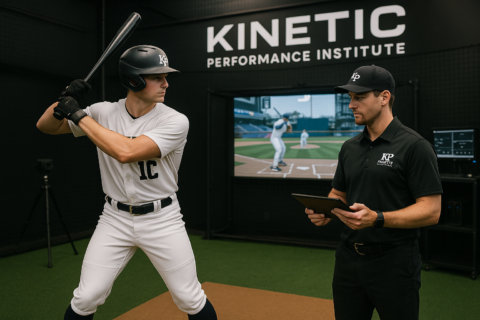Arm Care: A Simple Guide
Arm care has, and maybe always will be, the most controversial part of the great game of baseball. The inherent nature of throwing overhand is probably (hopefully not ) always going to produce injuries at a fairly high rate, but there are certainly many things that can be done to mitigate some of the risk of being an overhand thrower. There are some true pioneers doing some amazing work in the field of arm care and these people are making their information readily available. Unfortunately, many in the game want to be rooted into tradition, rather than progress, and refuse to acknowledge the data and methods that are helping the situation. This is lazy and continues to put players in compromising positions, either in the name of tradition or in the name of making some money (playing tournaments when training should be prioritized – like in January). This blog post will attempt to marry those 2 worlds together and provide a simple guide to follow to understand and implement a successful arm care routine.
The first area that needs to be examined when building a proper arm care protocol is the individualized nature of each athlete. Every athlete has a different anatomical structure and physiological nature of movement and that needs to be the first factor when building an arm care program. For example, a pitcher that has an above average range of motion in their shoulders should never statically stretch their shoulder capsule (think traditional arm stretching) and should really focus on activation work like resistance cords, shoulder tubes, etc. to increase positive blood flow to the area. On the flip side, a pitcher that has very tight shoulders (or lats, pecs, etc) might need to do some static stretching along with the activation work, as well as some muscle release work with a massage gun or lacrosse ball. A pitcher with poor Thoracic Spine mobility should also include a lot of mobility work into their warmup/arm care routine, as the the rotational aspect of the T-Spine factors in heavily to arm health. Giving all of these different (and very common) pitchers the same arm care routine will inevitably lead to many pitchers not getting the directed routine they need that serves their individual needs.
Now that we have established individualization as a key to proper arm care, the next area to be examined is the warm-up routine. We have already touched on some of the most important aspects of it. Activation is key for most warmup routines, as positive blood flow increases the core temperature of the body and helps prepare the area of the body being activated to be used and stressed. Common activation exercises used include: arm circles, wrist weights, shoulder tubes, and resistance cords. Generally, resistance cords are very low risk, but knowing the individual can help with using them. As mentioned before, those with loose shoulders should prioritize resistance cords. Those with tighter shoulders should also do cords, but need to make sure they are done after activation and release work. Release work should be a part of most athletes warm-up routine. Release work is commonly performed with a massage gun, lacrosse ball, or the massage balls often found at most sporting goods stores. After an individualized assessment, an athlete should learn what areas on their body are tight and need constant release work, and address those in warmups. Common areas of the upper body that often need release work are the pecs, lats, and rhomboid. An example of a common problem with release work is the pitcher that gets very sore in their lat after pitching. That is due to the lat performing its physiological function (pulling the arm into the body) and can be overactive in some pitchers. Doing release work before throwing or pitching can greatly alleviate some of that soreness and promote better healing.
The next phase in arm care protocols is the first phase of throwing. Plyo balls have recently occupied this space and are an awesome way to prepare the body/arm for a heavy throwing session. Plyo drills are great, but just like the warmups, should be individualized. Each thrower will have different needs and their throwing drills should reflect that individualized approach. Some throwers should focus on connection work, while others might need arm path drills or separation/sequencing work. The great part about doing these drills with plyo balls is that a partner is not needed and players enjoy the sensation of throwing softer balls at a high intent.
The next phase of throwing is catch play. Catch play is pretty straight forward and generally most coaches do it correctly. The main thing to focus on is all the work that it has taken to get to this point. The whole routine to get to catch play should be a 20-30 minute endeavor. The large issue is most coaches are not willing to invest that kind of time to allow their throwers to prepare properly. But what is more important than arm care? The pitcher is by far the most important, and injured, player on the field. So not giving them the time to do their routine is literally compromising the most important person on the field and directly reducing the ability to win, at any level. So all coaches need to invest the time needed to allow pitchers to prepare for catch play properly.
Recovery is the next phase of a well-designed arm care routine. Recovery is often the forgotten aspect of almost any training routine, baseball or not. But recovery is quite possibly that next frontier in player development. So many injuries are a result of not recovering properly. But recovery is not just resting, it is an active state that needs to be focused on and programmed, just like any training modality. The 2 main, and easiest, ways to ensure proper recovery is sleeping and eating properly. Sleep is by far the best way to recover, it literally is the whole purpose of sleeping. Injury rates are far higher in those that do not get 7-9 hours a night as opposed to those who do. Food plays an active role in recovery and should also be prioritized in the process. Throwers that are not putting good fuel in their body will break down at a higher rate than those that do. Active recovery should focus on movement. When a thrower is sore, blood flow is the best way to recover. Damaged soft tissue needs positive blood flow to regenerate, remap, and to repair itself. Common ways to promote active recovery and positive blood flow are: re-doing a warmup routine (wrist weights, shoulder tubes, cords, etc), and electronic stimulation devices like a Marc Pro. Electronic stimulation devices activate and pulse the large muscle groups around the affected area and promote positive blood flow. Ice should never be used to promote recovery in arm care and in general, pitchers should never ice their arms. This would be a whole separate blog post to explain, but those interested should read this article.
Finally, the key to building and maintaining arm health is a proper on-ramp phase to a season. In Major League Baseball, 70% of arm injuries happen in the first two months of the season and the month with the lowest rate of arm injuries is September. These objective facts defy conventional thinking that arm injuries are a result of overuse, and in fact, nod towards improper on-ramping to prepare for the stressors of competitive throwing. After a brief break at the end of the Fall season, throwers should on-ramp for at least 6-8 weeks with a very methodical plan to ensure they are ready for the stress they will be exposed to at the start of the season. Repetition and volume should be added very gradually during the on-ramp phase and pitchers should work up to high intent throwing and get to the point to where they are throwing in simulated games or Live AB’s for weeks before they get into their first competitive situation. The muscles, ligaments, and tendons involved in arm care are soft tissue, meaning that they respond to and get stronger with stress. But an overload of stress when the soft tissue is not built up sufficiently will inevitably lead to an injury.
Keeping throwers healthy is an eternal chase that all baseball coaches are always on. The issue is complicated and nuanced, but following a structured, methodical, and science-based plan gives pitchers the best chance to stay healthy.


